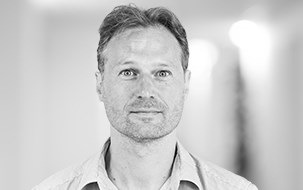Measuring stations provide new air quality knowledge in the Municipality of Copenhagen
Copenhagen measures and documents air quality at five stations, providing better knowledge and a solid basis for targeting pollution measures effectively.
Measuring stations provide greater knowledge of air pollution in the Municipality of Copenhagen
Too many of Copenhagen's residents are becoming ill and dying prematurely because of air pollution in the city. Recent reports show that pollution from sources within the municipality of Copenhagen accounts for about 10% of premature deaths in the region. Additionally, air pollution in Copenhagen has significant costs to society at large. This is a problem that politicians in Copenhagen take very seriously.
Funding has thus been allocated to a project that will provide additional knowledge regarding air quality and its health impacts in Copenhagen over a three-year period, starting in autumn 2020. This project was initiated as a collaboration between the Technical and Environmental Administration and the Health and Care Administration of the Municipality of Copenhagen.
As part of the project, FORCE Technology is installing a total of five air monitoring stations to measure such pollutants as nitrogen dioxide (NO2), particulate matter (PM2.5 and PM10) and ultrafine particulate matter (UFP) over a period of three years. Two of the stations will also measure black carbon, a substance most commonly emitted by vehicles and stoves.
Air quality measurements offer solid decision-making support
This exciting project is also relevant to many similar cities and municipalities. Because it will run for three years, the project is expected to generate large volumes of actionable data. Over the three years, the measuring stations will record and document pollutant emissions in a variety of weather conditions, seasons, tourism seasons, and other phenomena responsible for variance.
Measurements from the two stations measuring black carbon, in particular, will provide data on the distribution of pollutants from different sources. This will provide a clearer image of how much pollution comes from residential stoves and vehicle exhaust.
For the Municipality of Copenhagen, these measurements will offer solid decision-making support for mitigation measures such as environmental zones, changes to traffic patterns, and other measures benefiting residents' health and well-being. In addition, the data will be used to demonstrate whether the chosen measures have the desired effects, as well as to better predict periods of high pollution and issue health warnings.
Monitoring stations offer live pollution data in a cloud solution
FORCE Technology will set up and operate the five measuring stations in Copenhagen. From the measuring stations, data will be sent directly to a cloud solution, where the Technical and Environmental Administration and the Health and Care Administration can follow developments from hour to hour, day to day, over a three-year period.
You, too, can follow these developments on the Municipality of Copenhagen's website. Is the air healthy?
In addition, the data from the monitoring stations will be used to generate an annual report summarising trends in pollution throughout the year, with examples of periods of high and low pollution.
The measuring stations will be installed in strategically chosen locations in the city, in areas characterised by heavy traffic and the use of wood-burning stoves.


